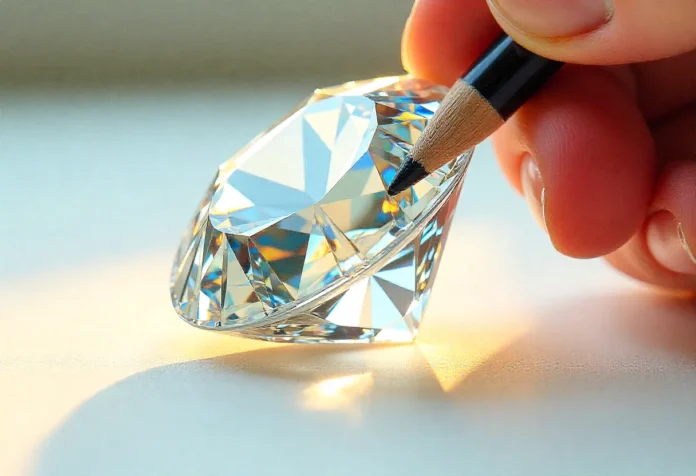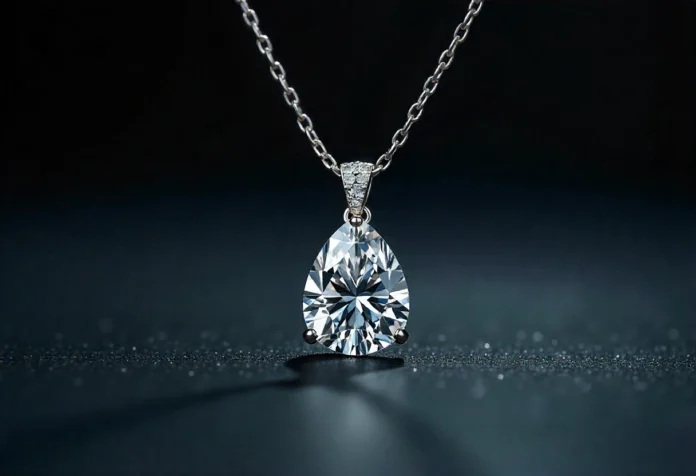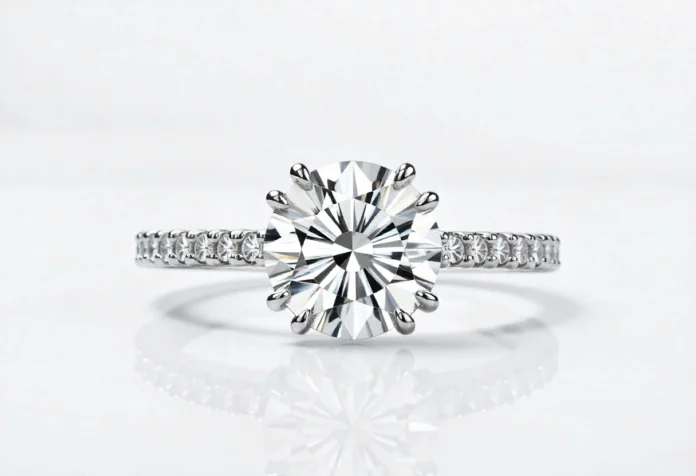I’ll be honest: the first time I looked at diamond grading charts, my eyes glazed over. All those letters, numbers, and technical terms felt overwhelming. But here’s what I’ve learned after digging into this world – once you understand the basics, choosing a quality diamond becomes way less intimidating. And finding the right retailer who actually explains things clearly? That makes all the difference.
What Actually Matters When You’re Looking at Diamonds
Everyone talks about the “Four Cs,” and yes, they’re important. But let me break down what they really mean when you’re actually shopping.
Cut is huge. I mean really huge. A well-cut diamond will outshine a poorly cut one every single time, even if the poorly cut stone has better grades in other areas. Cut affects how light bounces around inside the diamond and comes back to your eye. When a diamond has excellent cut quality, you’ll see it immediately – that’s where the sparkle comes from.
Color is interesting because most differences are incredibly subtle. The scale goes from D (completely colorless) to Z (noticeably yellow or brown). Rare Carat has this really helpful breakdown showing actual diamonds at different color grades. What surprised me was learning that many people can’t tell the difference between a D and a G color when the diamond is set in jewelry. That’s where you can save serious money without sacrificing what you actually see.
Clarity measures imperfections – inclusions inside the stone and blemishes on the surface. Here’s the thing, though: most clarity characteristics are completely invisible without magnification. Unless you’re going for perfection (which costs a premium), you can often choose a lower clarity grade that still looks flawless to the naked eye.
Carat weight is straightforward, it’s size. But two one-carat diamonds can look totally different depending on how they’re cut. A shallow cut might look bigger face-up but won’t sparkle as much. It’s all connected.
The Lab-Grown Question Everyone’s Asking
This came up when I was researching, and honestly, it’s a personal decision. Lab-grown diamonds are chemically identical to natural ones. Same hardness, same sparkle, same everything. A gemologist needs specialized equipment to tell them apart. The difference? Lab-grown diamonds cost significantly less – often 50-70% less than natural diamonds of the same quality.
Rare Carat doesn’t push you either way, which I appreciated. Natural diamonds took billions of years to form deep in the earth. Lab-grown diamonds are created in weeks using advanced technology. Both are real diamonds. Some people value the natural rarity and geological history. Others prefer the sustainability and value of lab-grown options. There’s no wrong answer here.
Why Rare Carat Keeps Coming Up in My Research
When I started looking into where to actually buy a diamond, Rare Carat name kept appearing with these consistently high ratings. They’ve got 4.9 out of 5 stars on both Google and Trustpilot, which is pretty remarkable for a jewelry retailer. People don’t hand out five-star reviews lightly when they’re spending thousands of dollars.
What sets them apart is how they’ve built a complete online jewelry store that competes with major brands. They’re not just selling diamonds – they’ve got their own branded products, serious quality control, beautiful packaging, and gemologists you can actually talk to. For free. No pressure, just expertise.
https://www.youtube.com/watch?v=W-m44FFBDiI
What It’s Actually Like Shopping There
I spent time on the Rare Carat website to see what the experience was really like. Right away, I noticed how clean and organized everything is. You can filter by any combination of the Four Cs, choose your certification lab preference, set your budget, and narrow down exactly what you’re looking for.
Every single diamond has detailed photos – I’m talking high-resolution images where you can really see the stone. Full certification information is right there. Actual measurements, not just estimates. This level of transparency is what you need to feel confident buying something this important online.
They’ve also got these quality assessment tools that basically tell you if you’re getting a good deal. It compares the diamond you’re looking at against similar stones and flags when you’ve found something special – like when a tiny grade difference means big savings but zero visible difference. Smart shopping, basically.
One thing I really valued was their ring sizing guidance. Getting the size right matters more than people realize, and they walk you through measuring properly so there’s no guesswork involved.
The checkout felt secure (which matters when you’re spending serious money online), and they include insured shipping at no extra cost. The packaging deserves a mention too – this isn’t your standard brown box delivery. They’ve clearly thought about making the unboxing experience special, because receiving a diamond should feel like an event.
The Quality Standards That Back It All Up
Every diamond sold through Rare Carat comes with certification from respected gemological labs – GIA and IGI primarily. These are independent third parties verifying everything about the stone. You’re not just taking someone’s word for it.
They’re also serious about ethical sourcing, which matters to a lot of buyers today. The supply chain has to meet their standards before a diamond makes it to their inventory.
The customer service angle is worth noting because it’s genuinely different from traditional jewelry stores. The representatives know their stuff – actual gemological knowledge, not sales scripts. They’re available throughout the whole process, from your first questions through post-purchase. And critically, they don’t upsell. If a less expensive diamond meets your needs, they’ll tell you. That consultative approach is why their reviews are so consistently positive.
Pulling It All Together
Learning about diamond grading doesn’t have to feel like studying for a geology exam. The Four Cs give you a framework. Certifications give you verification. And retailers like Rare Carat give you the transparency and expertise to make smart decisions.
What I’ve come to appreciate is that there’s no single “perfect” diamond. There’s the right diamond for your priorities, budget, and what actually matters to you. Maybe you want maximum size. Maybe you prioritize the best cut quality. Maybe ethical sourcing is your top concern. Understanding grading helps you optimize for what you care about most.
Shopping online for something this significant seemed risky at first. But when you’ve got access to better information, more options, and knowledgeable people answering your questions without commission pressure, it actually makes more sense than the traditional showroom experience. Rare Carat has basically figured out how to take everything good about buying diamonds and make it work better online – transparent pricing, quality guarantees, expert guidance, and that 4.9-star rating that speaks for itself.



